So, as a longtime car audio guy, I have peers and friends who cover every conceivable genre of car audio enthusiasm. I have friends who are installers, own and run stores, work at distributors and at manufacturers. I have tweaky friends that think high-end interconnects and low-efficiency wideband drivers are the way to go for sound quality. I also have a ton of friends who are true-to-the-core bassheads. I love the passion every single one of them has for car audio, even if sometimes they don’t spend as much time as I do researching the physics behind how everything works. In this article, we’ll discuss high-SPL subwoofers and PA-style midrange speakers and why using them together likely won’t result in an audio system that produces enough midbass.
Boom, Boom, Tiss, Tiss
I love audio systems designed for car audio competitions. Whether it’s sound quality or SPL, the engineering of these creations is interesting to analyze. The SPL guys build awesomely powerful battery banks, install multiple alternators and manage to cram hundreds of feet of massive power wire into their cars, trucks and vans. They have tens of thousands of watts of power on tap to reproduce bass frequencies and mind-numbing levels – It’s incredible! They will work for hours to gain a tenth of a decibel more output in hopes of winning a competition.
The guys who build deafening systems to cruise around or show off at local meets have a reputation for having all bass and highs with very little midbass in the system. Having looked at dozens, if not hundreds of these installations, the reason is evident to me. Allow me to explain.
Much of the speaker’s frequency response is determined by the mass of the cone assembly. More accurately, there is a specification called the Moving Mass, and it’s represented in a set of electromechanical specifications by the value Mms. The moving mass refers to the weight of the cone, dust cap, voice coil former and winding, assembly adhesives, half the surround and half the spider. The value is typically specified in grams. The Mms value is the amount of weight the motor has to push back and forth. Yes, the suspension’s compliance plays a role, but we are going to keep things simple for now and ignore that.
If you have a 15-inch subwoofer that’s designed to handle 1,500 watts of power and provide 4 inches of excursion, the cone assembly is going to need to be strong. A typical sub like this will have a moving mass around 350 grams or 0.75 pound. That’s a lot of weight to swing back and forth 60 or 80 times a second. The g-forces imposed on the cone and motor assembly are downright impressive.
If you try to play midrange frequencies through this sub at high volume levels, it simply can’t react fast enough. Secondly, these drivers typically have large 3- or 4-inch diameter voice windings with many layers. This large voice coil can dissipate a lot of heat energy, but it also acts like an inductor to limit high-frequency output. In short, these drivers don’t reproduce midrange frequencies well.
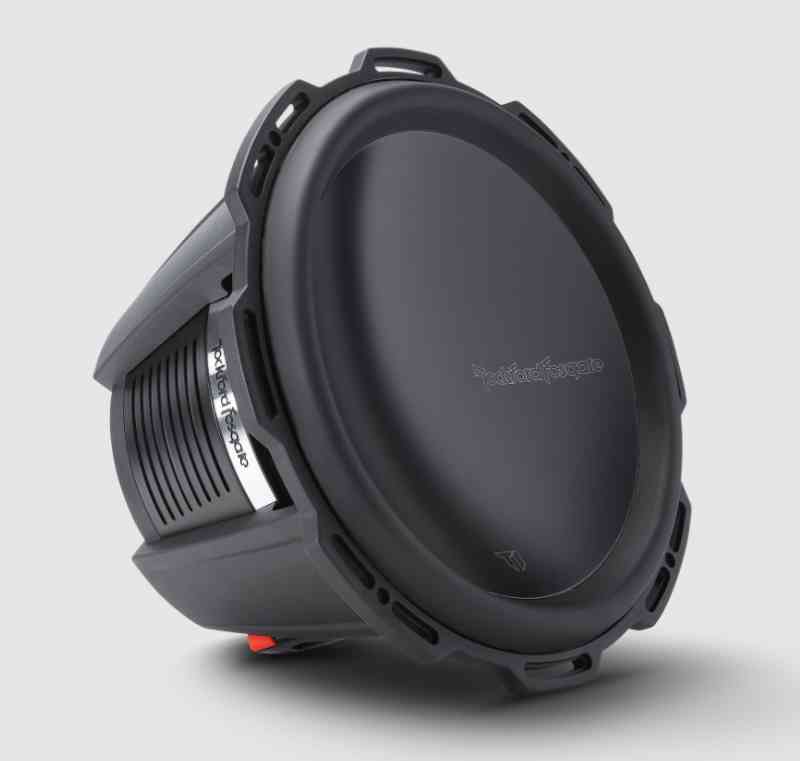
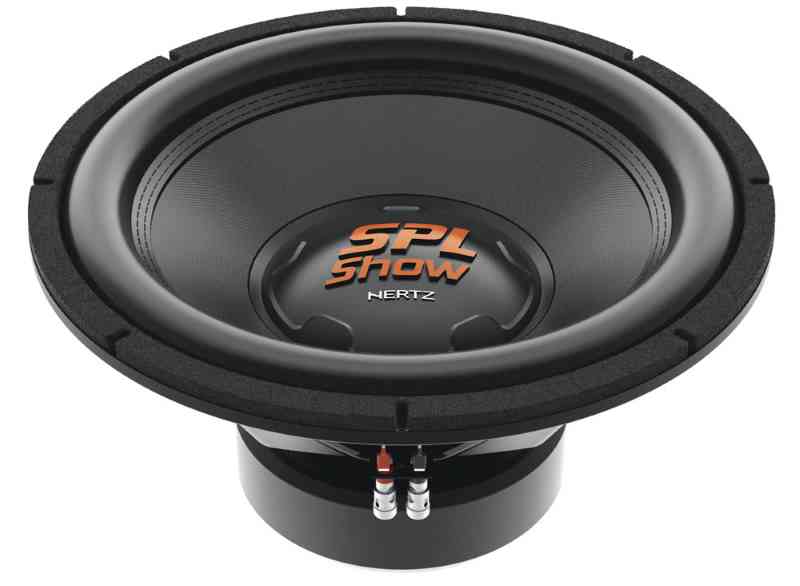
Coming from the other end of the audio spectrum, we have high-efficiency midrange drivers like those that would be used in a PA system. To maximize their efficiency, the cone and moving parts of the motor assembly need to be as light as possible. A typical 8-inch high-efficiency driver has a moving mass in the 20-gram range. The low mass allows more of the signal going into the speaker to be turned into sound. Unfortunately, the limited mass of the cone means that the resonant frequency is high, and the midbass output is limited. Many of these drivers are designed to be used at frequencies above 150 or 200 hertz. These drivers’ limited excursion capabilities compound this low-frequency output limitation. Many only have an Xmax spec of three or four millimeters.
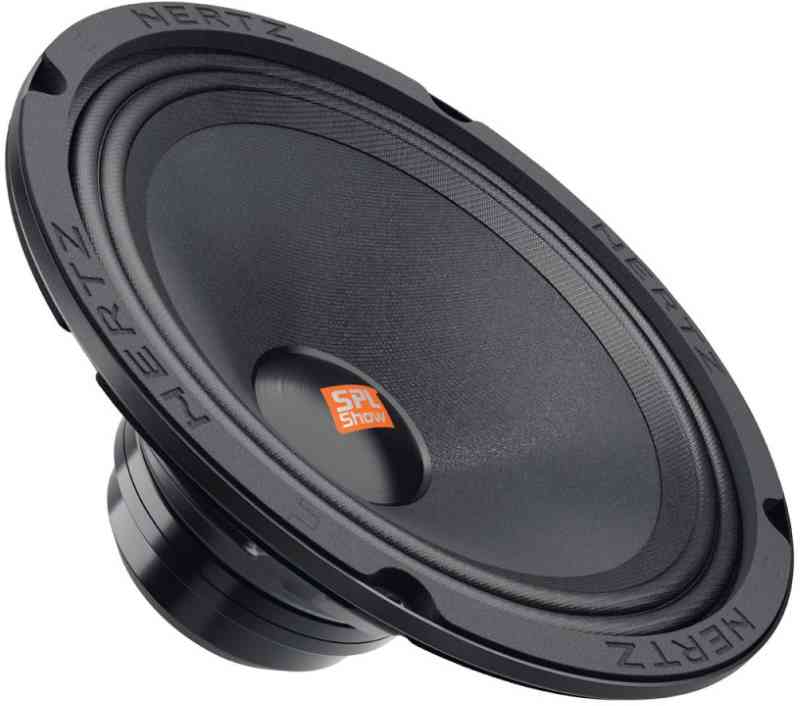
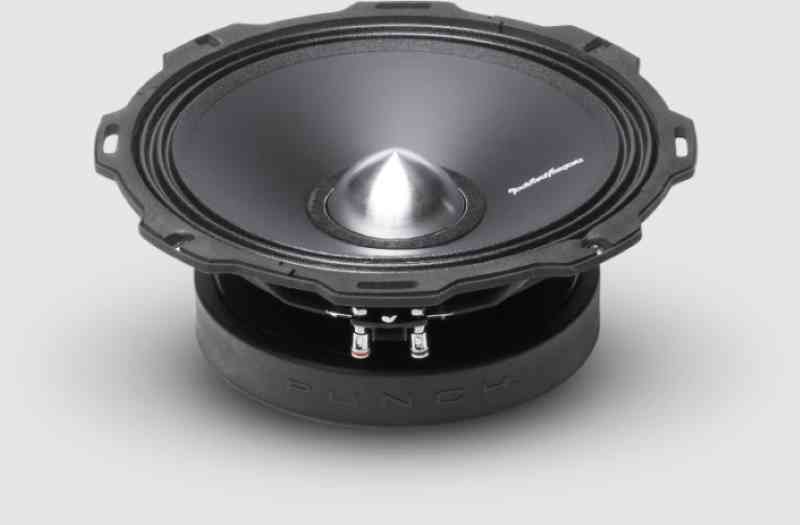
Public Address System Design
If you have big, heavy subwoofers and only play them to 75 or 80 hertz and loud midrange drivers that only play down to 150 to 200 hertz, you end up with a significant gap in a frequency range that’s important to reproducing music. For example, having a hole in the system frequency response around 100 hertz means bass guitar and drums may lack warmth and impact, and male vocals will sound thin.
If you look at a common PA system used at a concert, you’ll quickly learn that what they consider a subwoofer is very different from the car audio definition. Most high-quality subwoofer systems for these applications have no problem playing up to 500 or 1,000 hertz and are often crossed-over with a two-way speaker system up at 150 hertz, depending on how loudly things need to be played. How is this possible? The moving mass of many of the 15-inch subwoofers used in these applications only weighs 85 grams.
The relationship between the moving mass specification and low-frequency extension is pretty direct. More mass usually means more low-frequency output. Of course, the trade-off here is that a pro-sound subwoofer doesn’t produce the same output at 25 Hz as the car audio subwoofers. But, hey, since the dawn of physics, you don’t get something for nothing.
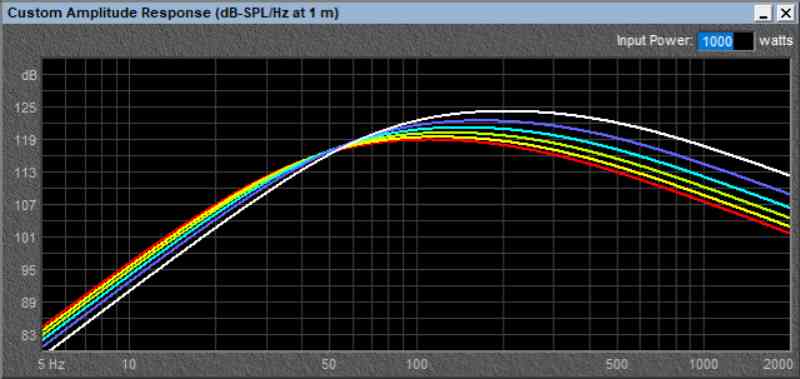
The graph above is a theoretical simulation of a 15-inch woofer where the Mms value decreases from 350 grams (red) to 100 grams (white) in 50-gram steps. As you can see, the subwoofer produces more midbass but less low-frequency output.
Cone Excursion Versus Output
Let’s take a look at one of these pro-sound 8-inch drivers in terms of output and cone excursion. This particular driver is rated to handle 250 watts of power with a note that there needs to be a high-pass crossover with a 12 dB/octave slope and a knee frequency of 140 hertz applied to handle that much power.
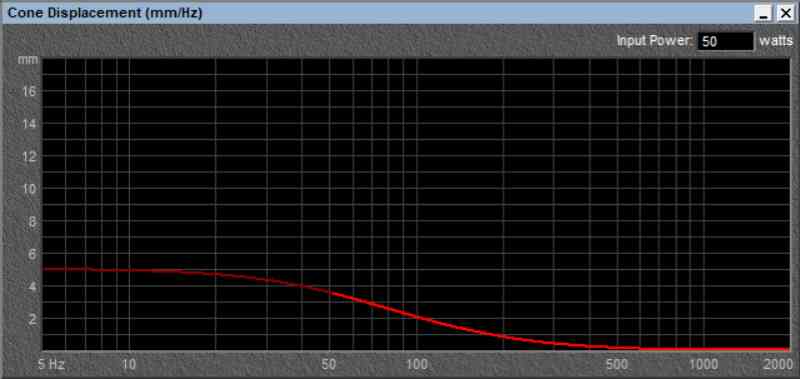
I started by modeling the speaker in a 2-cubic-foot enclosure to simulate the behavior of a single unit installed in a well-sealed door. With 50 watts of power applied, this speaker reaches its 3.5-millimeter excursion limit around 50 Hz. Fifty watts is quite a bit of power. The calculations predict that this speaker should be producing about 111 dB of output up at 500 Hz, where it’s the most sensitive. That’s very loud. However, with subwoofers capable of producing well over 150 db of output, much more power is often sent to these speakers.
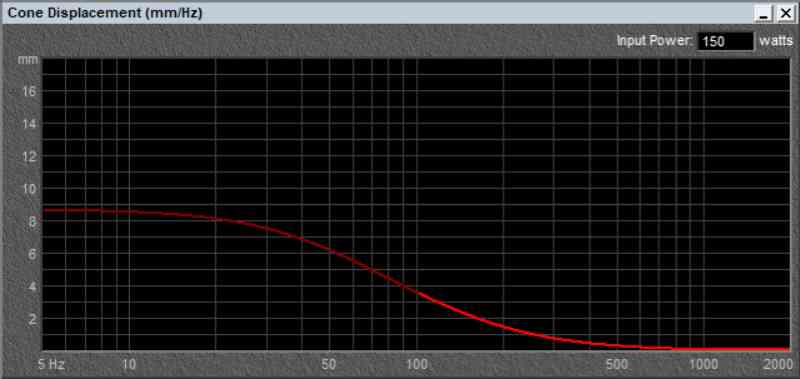
This second graph shows the output of the same driver in the same enclosure with 150 watts of power coming from the amplifier. We can see that the driver now reaches its excursion limit at 100 Hz. Of course, free-field output at 500 Hz has increased to 116.2 dB.
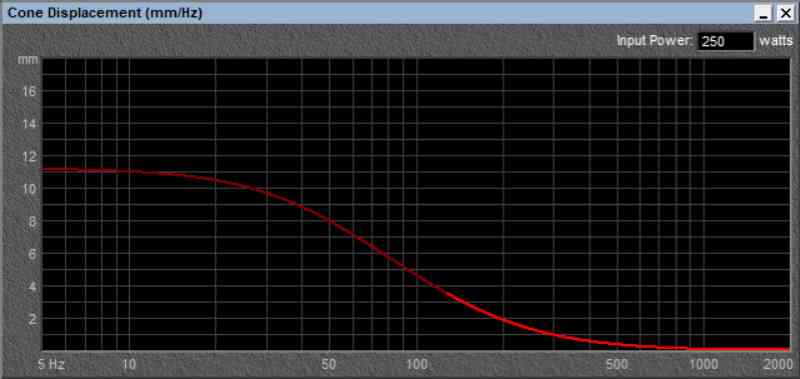
Pushed to its thermal limit with 250 watts, cone excursion now becomes an issue at frequencies under 130 hertz because of the limited Xmax. Output is around 118.4 dB for a single driver in a free-space application. So, it’s good and loud, but it can’t produce a lot of midbass. Without a high-pass filter at 140 or 150 hertz, the driver will produce a significant amount of distortion or may be damaged.
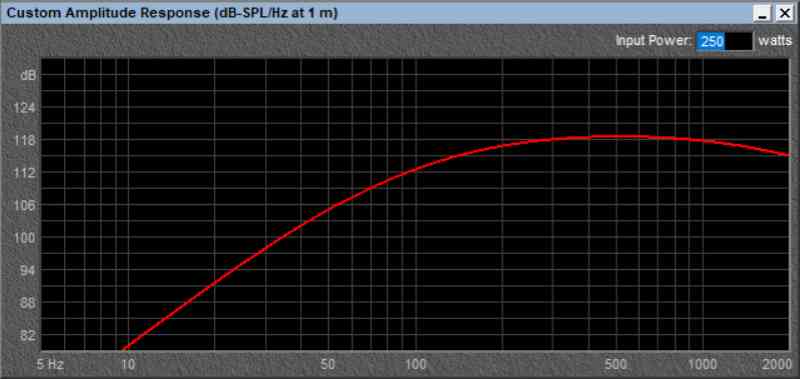
The graph above shows the emphasis in output at 500 Hz. This modelling mimics the manufacturer frequency response curve quite closely, minus a dip at 1 kHz and resonant peaks above 3 kHz. The driver’s output is down just a smidge under 6 dB down at 100 Hz as compared with 500 Hz. That’s not ideal. Your system should have a fairly flat frequency response from 100 to 2.5 kHz. Your installer could use an EQ to cut the output around 500 Hz to match, but that’s giving away a lot of sound pressure through the upper midrange. This isn’t working well.
Excursion and Distortion
An odd fact that many car audio enthusiasts and system designers overlook is the relationship between distortion and cone excursion. As it turns out, moving coil speakers don’t like to move all that much. The distortion they produce increases quickly as excursion increases. Less unwanted information is added to the output of a speaker that’s moving back and forth 1 millimeter than one that’s moving 6 or 8 millimeters. Less distortion means the sound will be more accurate. You might be familiar with the harshness many of us attribute to these high-SPL or poorly implemented public address systems. This is usually the addition of unwanted harmonic and intermodulation distortion.
Why does distortion increase with more excursion? Nonlinearities in the suspension and electromagnetic characteristics of the driver, combined with cone, surround and dust cap resonances become more significant as the speaker cone moves farther.
How To Fix the Lack of Midbass in High SPL Car Audio Systems
The easiest way to reduce distortion is to reduce cone excursion. There are three ways to do that in the theoretical system we are discussing. Your options are to turn the volume down, use more drivers or raise the crossover frequency. Since we know my basshead friends aren’t going to turn the volume down, and they already have as many speakers in the doors of cars and trucks as humanly possible, the next logical choice is to limit cone excursion by raising the crossover frequency.
For those who have a goal of recreating what a recording engineer might hear in a studio, having the bass coming from the front of the car is essential. To achieve this, car audio systems focused on sound quality should use a high-pass crossover point of about 80 Hz on the midrange/midbass drivers and a 60 or 65 hertz low-pass on the subwoofer. When executed with the proper equalization, crossover slope and signal delay settings, the sound from a good subwoofer will appear to come from the dash or the front door speakers.
It’s probable that 99% of my basshead friends couldn’t care in the slightest if the bass in their cars, trucks or vans appears to come from the front or back of the vehicle. So, the solution to improving the overall frequency response of these systems and reducing distortion is to either install a wall of woofers (not subwoofers) or to raise the crossover frequency on the subs and midbass drivers to around 130-150 Hz – if your subwoofers still sound good playing that high. This raised-crossover approach will require you to apply some equalization to the signal going to the subs in order to blend their output with the output of the midrange speakers.
If you’re working with a shop to design an audio system that might use a bandpass enclosure with a slot port, you could easily mount a pair of 12-inch PA-style subwoofers on either side to play from 80 to 300 Hz. The keywords here are “PA-style subwoofers.” These aren’t the same subwoofers we use in car audio systems. We are talking low Mms drivers designed to play down to maybe 50 or 40 hertz with tremendous efficiency. The banks of door speakers could play from 300 and up to wherever those nasty little horn tweeters take over. Here’s the free-field frequency response graph of a pro-sound 12-inch woofer getting 700 watts of power.
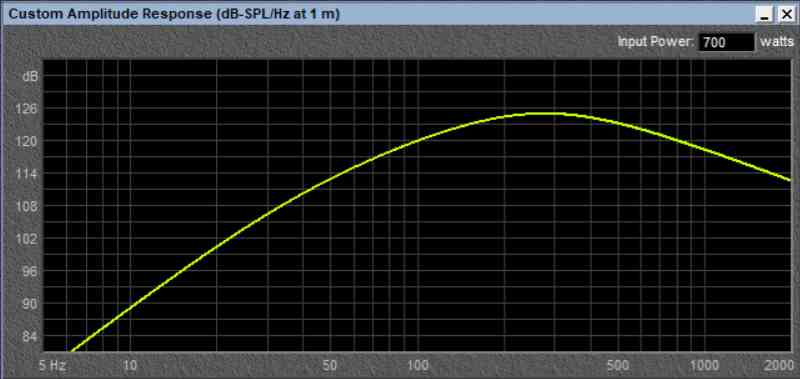
As you can see, it has no problem producing a ton of output from 100 to 300 Hz. It also doesn’t have any excursion issues and could theoretically play down to 55 Hz. However, for the same reasons that we don’t want to overdrive a midrange driver, there’s no need to push these woofers to play frequencies under 80 Hz.

With a four-way system design with high-power car audio SPL subwoofers, PA-style subwoofers, midrange speakers and tweeters, there’s no reason why one of these systems can’t sound magnificent, even at high volume levels. Combine a digital signal processor into the mix, and the response can be silky smooth, even if it’s loud enough to scare people.
What’s My Point?
Whether you’re listening to Holly Cole, Metallica, Lil Wayne or a remix by DJ Sirin, it’s the goal of BestCarAudio.com to help every one of our readers enjoy the music they love with the best sound quality possible. The information we provide is intended to help you choose the best solutions and mobile enhancement retailers to install and calibrate them. Hopefully, this article helps explain the importance of having the right mix of woofers/subwoofers and optimized crossover points in a high-output system to ensure that your music sounds amazing!

